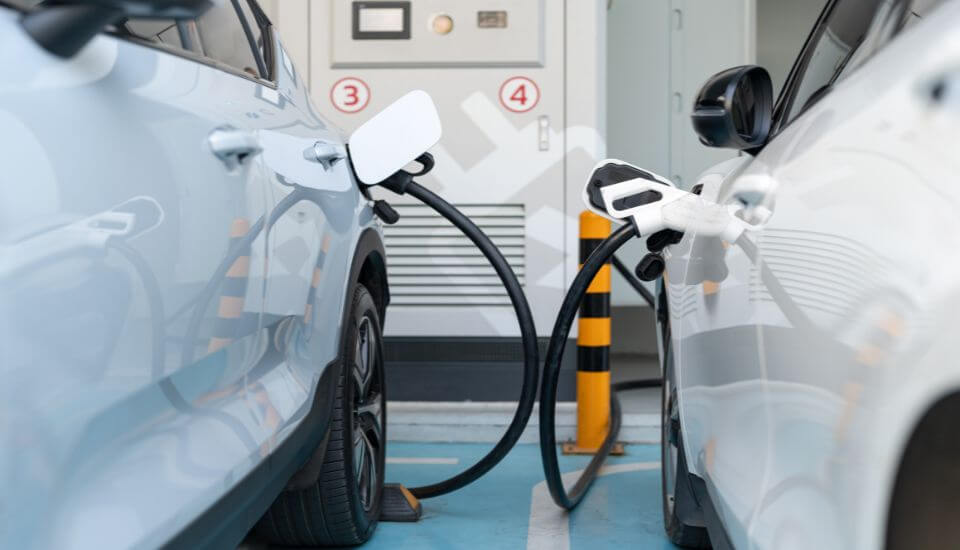BY HOPE LEKWA
Electric vehicles (EVs) are gaining momentum in Nigeria, with pioneers like NEV Electric, Possible EVS, and the locally assembled Hyundai Kona EVs playing key roles in kickstarting the country’s EV revolution. Adding to this progress, BYD, the world’s leading EV manufacturer, officially entered the Nigerian market in March 2025 through LOXEA Nigeria. Introducing their popular models like the Atto 3 and Dolphin, providing essential EV infrastructure like charging stations, maintenance, and spare parts, further accelerating Nigeria’s transition to cleaner mobility.
While these developments mark significant progress toward sustainable transport, range anxiety—the fear of running out of battery before reaching a charging station—remains a challenge, especially during long trips or in heavy traffic. Overcoming this concern through expanded infrastructure, affordability, and public education will be crucial to making electric mobility practical and accessible for Nigerians.
According to the Nigerian Midstream and Downstream Petroleum Regulatory Authority (NMDPRA), Nigeria’s compressed natural gas (CNG) conversion capacity experienced a remarkable 2500% increase at the beginning of 2024.
Advertisement
This reflects a significant shift toward alternative fuels and signals growing options beyond petrol-powered vehicles. This rapid growth is supported by initiatives like the Petroleum Industry Act’s promotion of the Presidential Compressed Natural Gas Initiative (PCNGi), which aims to expand the availability and use of CNG across the country.
Alongside this, electric vehicles (EVs) are steadily entering the Nigerian market. The rise of these alternatives isn’t driven solely by their environmental benefits, although that remains an important advantage. More importantly, many car owners are seeking relief from the unpredictable and often high petrol prices, making CNG and EVs increasingly attractive options for more affordable and sustainable transportation.
Trying New Things…
Advertisement
Nigerians often approach new technologies with curiosity and caution, as seen in the gradual acceptance of e-commerce. Although it existed in the early 2000s, it only gained widespread traction with Jumia and Konga in 2012. Due to increased internet access, smartphone use, COVID lockdowns, and a growing middle class, it saw further acceleration in 2020.
In the same way, EV adoption in Nigeria is expected to grow slowly but steadily, depending on improved infrastructure, affordability, cultural shifts, and greater public awareness. This mirrors the initial hesitancy and eventual embrace seen with e-commerce platforms.
My interest is in its infrastructure. Nigeria’s EV infrastructure is still budding, with about 180 charging stations mostly concentrated in Abuja and Lagos. This leaves many areas without reliable access and fuelling range anxiety among users.
This scarcity makes long-distance travel with EVs daunting, and journeys in congested areas are mixed with anxiety, as drivers cannot rely on finding a charging station as easily as petrol stations.
Advertisement
Even home charging, which is often touted as a solution, is hampered by our notoriously unreliable electricity grid, which suffers frequent outages and collapses and cannot support widespread overnight charging.
It is impossible to imagine mass EV usage in any city, even Abuja and Lagos, with our current national electricity grid, as millions still lack access to electricity and those connected still deal with epileptic supply.
Beacon of Hope?
However, amidst the persistent challenges in Nigeria’s EV landscape, companies like NEV Electric and Possible EVs are emerging as key drivers of progress.
Advertisement
NEV Electric has committed substantial investment to infrastructure, with plans to install 300 charging stations across Lagos and Abuja by August 2025, a significant step toward alleviating range anxiety and supporting the growing population of EVs on Nigerian roads.
Additionally, Possible EVs is advancing the rollout of fast-charging solutions, beginning with its Charging Hub in Abuja. This hub offers ultra-fast charging capable of fully charging vehicles in 30 minutes or less and is free to the public for the first six months.
Advertisement
The Nigerian government has also set ambitious targets for electric vehicle adoption, aiming for 7.5% EV penetration by 2025 and 40% by 2050, as outlined in the 2050 Auto Policy Agenda and supported by frameworks like the Energy Transition Plan and the National Action Plan for Electric Vehicle Development.
These policies emphasise expanding local production, building charging infrastructure, and offering incentives such as reduced import duties and tax breaks to attract manufacturers and investors.
Advertisement
Through its LagRide initiative, Lagos State is also leading the integration of EVs into ride-hailing services. It plans to introduce thousands of electric vehicles to the market as part of broader efforts to mainstream electric mobility in Nigeria.
With all these potentialities, Nigeria has seen similar waves of enthusiasm and ambitious policy around new technologies that ultimately struggle to deliver on their promise due to one structural issue or another.
Advertisement
An example is seen in our previous attempts to revive the automotive industry through various national automotive policies. Despite bold projections and government incentives, these efforts were repeatedly hampered by inadequate infrastructure, inconsistent power supply, policy instability, and limited local manufacturing capacity, all of which closely mirror the current challenges facing the EV sector.
ANAMCO (Anambra Motor Manufacturing Company) at some point in time represented Nigeria’s effort to build a local automotive industry in the late 1970s in a joint venture between the Nigerian government and Daimler-Benz, but it was beset by the issues that hamper Nigeria’s industrial sector; inadequate infrastructure, unreliable power supply, policy inconsistency, and an overreliance on imported components.
Now, with the 2050 Auto Policy Agenda and a backdrop of these historical precedents, it simply highlights the need for sustained investment, stable policy, and infrastructure development to avoid repeating the cycle of initial enthusiasm followed by stagnation or failure.
Policy Pathways to Accelerate EV Adoption in Nigeria
While Nigeria’s EV market shows promising signs, with local and international partnerships and government incentives driving adoption, the journey is far from straightforward, as seen in the ANAMCO dilemma.
Despite an estimated 15,000 to 20,000 EVs now on Nigerian roads and ambitious government targets for cleaner transport, challenges like high upfront costs, limited charging infrastructure, and policy shifts continue to slow widespread adoption.
Highlighting just a few policy pathways to attaining EV adoption in Nigeria would be important to understanding the journey ahead. Chief on the list is recognising that plans to accelerate EV adoption in Nigeria lie heavily in our power sector. We need to scale up power generation if we want EV adoption in Nigeria!
It doesn’t get any simpler. Our national grid faces significant hurdles despite recently installing a generating capacity of about 13,000 MW.
Actual delivered power falls to about 4,000 MW due to transmission and distribution bottlenecks, leaving millions reliant on generators and facing frequent outages. As it is, the grid cannot support widespread EV adoption, especially with the higher demands of EVs. For EV adoption to be practical, these gaps need to be covered.
The recent ratification of the National Integrated Electricity Policy (NIEP) provides fertile ground for the adoption of EVs, both directly and indirectly. By explicitly identifying transport electrification and clean mobility as central to Nigeria’s climate agenda and energy transition strategy, the policy lays a strong foundation for the shift to low-carbon mobility.
Furthermore, its core objectives of expanding universal electricity access, improving grid reliability, and strengthening infrastructure are essential enablers for developing EV charging networks and tackling the hurdles faced in power generation and distribution.
The policy also accelerates EV adoption through incentives such as duty waivers for EV imports and support for local e-bus assembly, thereby encouraging private sector investment and reducing entry barriers to EV adoption and the required infrastructure.
On the other hand, there is also the high cost issue, which needs to be addressed with an appropriate plan, as affordability remains a major barrier, especially in a country where purchasing power declines.
To address this, we need to revisit the National Automotive Industry Development Plan (NAIDP) 2023–2033, which plans to boost local production of EVs to 30%, thereby reducing cost. The plan also introduces a 10-year tax relief for EV manufacturers and additional tax breaks for assemblers and component producers.
These incentives are designed to attract both local and international investment, boost local manufacturing capacity, and ultimately lower the retail price of EVs.
Beyond this, the government is already working with the private sector to make EVs more accessible through innovative financing schemes. The National Automotive Design and Development Council (NADDC) has developed a vehicle financing program, set to launch with an initial N20 billion fund, which will enable qualified Nigerians to purchase new vehicles, including EVs, on low-interest credit, with repayment periods of five to six years. This approach is expected to significantly lower the entry barrier for middle-income earners and encourage wider adoption.
Finally, for Nigerians to let go of their anxieties about EV, we need to devise and agree on a stable policy implementation framework, one that ensures continuation and synergy through ministries, policy plans, tiers of governments, and administrations.
This is important given Nigeria’s history with policies and implementation over the years, often marked by inconsistency and short-lived enthusiasm. Past efforts to revive the automotive industry, such as the ANAMCO project and various national automotive policies, faltered due to shifting priorities, infrastructure gaps, and a lack of sustained commitment.
These setbacks serve as a cautionary caveat that, without policy continuity and follow-through, even the most promising plans risk becoming yet another set of documents collecting dust after each change in administration.
Hope Lekwa is a researcher specialising in sustainability and development.
Views expressed by contributors are strictly personal and not of TheCable.











